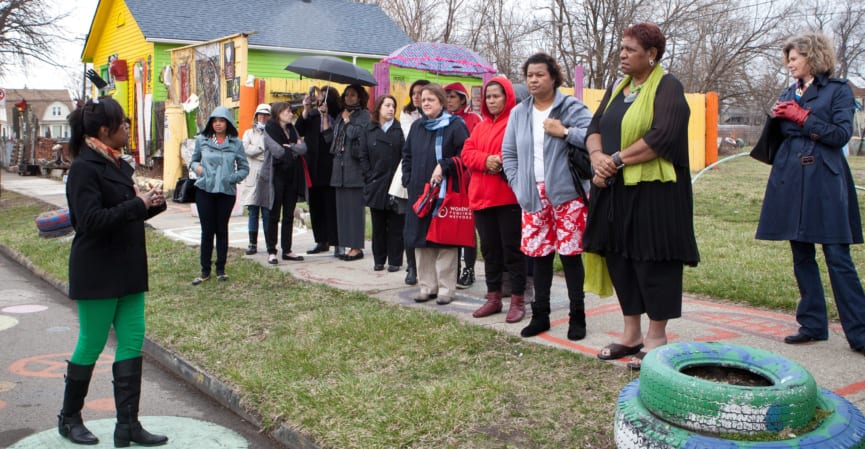Hear from trustee of the Valentine Foundation, Laura Morris, who shares why constituent involvement is necessary for bold, visionary philanthropy.
As a trustee for an organization that funds social change programming for women and girls, one could see why going to the #WomenLeadingPhilanthropy Symposium in Chicago earlier this month was a natural fit for me: “Applying innovation, disrupting the status quo, and effecting social change” sounds like a board meeting at the Valentine Foundation!
However, what was not a natural fit for me was the absence of constituent representation in the crowd and discussion. In a field that is constantly asking how to increase female representation on boards, create a pipeline for female angel investors, and implement effective strategies for sponsoring/mentoring “up and coming” women leaders – the attendees seemed to miss the most obvious group of women leadership candidates: the individuals that have benefited from women funding networks and giving.
And the reason for my targeting such an important group? Because I am a constituent of the Valentine Foundation first and a trustee second.
When I was stressed about having a second child and feeling the pull between the boardroom and the playroom, a friend mentioned Valentine’s Fund for Visionary Leadership. Valentine maintains this fund to grow the next generation of leaders at non-profits serving women and girls. It wasn’t long after my leadership fund year that I joined the Valentine Foundation Board. I still consider that year of leadership training as a turning point in my career and life.
I bet your constituents have similar stories. Maybe you funded their job training program, got them needed medical care, or trained them as teenagers to be grant makers themselves. Don’t just stop there. Invite your grantees to serve on committees, become part of strategic decision making, and even attend women’s philanthropy conferences.
And, to take it a step further (and bring home the message that Joseph F. Keefe shared about mandatory board gender diversity requirements), I encourage you to seek constituency representation on your board and on the boards to whom you give funding. I know at the Valentine Foundation we ask about board composition and constituency representation. Grantees often struggle with this question. Many of them explain that they need a male CEO of a large company on their board to help fundraise for gaps in operating expenses. (And, look, I’m not naive to the necessity of that big check.)
But what I will not accept is that an all-male/non-constituency board is more productive and more financially worthwhile. The male donor on your board that doesn’t attend meetings, sometimes provides an event sponsorship, but is otherwise disconnected and uninterested in your case IS NOT going to pound the pavement to bring in matching donations or launch a social media campaign for you. It’s time to embrace your constituent as a meaningful stakeholder, decision maker, and contributor.
We learned from the Lily School of Philanthropy that women give more often and at higher levels than men. This is true for your constituency, and many will bring a level of commitment and consistency that other board members just can’t seem to muster. In fact, it is their stories and impact that make them your best mission keepers which will encourage others to donate and participate in your cause.
And let’s start young, shall we? Groups like the Women’s Funding Network and Girls Justice League target young women in communities of need to take on leadership roles in the philanthropic and civic sector. By fostering this leadership at a young age, these girls won’t have to wait until baby #2 to begin to critically think about gender, inequities, and giving, like I did.
Indeed, it is the women we serve that hold the most numbers and the most insight into what it is like to be a woman in the world without status, power, or money. What a better group to fill the leadership gap, think strategically about change (because they’ve had to make the “tough calls” their entire life), and inspire others to join them in the fight.
I hope you’ll take a hard stance on female constituency involvement in the next year. Bring this conversation back to your boards and boards you grant to. Evaluate current memberships and, in your roundtable conversations, get real about it. Discuss the challenges of making this a priority. And then put the ball in everyone’s court. We are smart, creative, and energetic women. We can figure this out too.
Laura Morris is a trustee for the Valentine Foundation, which has advocated for social change on behalf of women and girls through responsive and responsible grant making for over 25 years. She is also a Clinical Systems Director at a nationwide social service organization where she is implementing Affordable Care Act and HITECH Act requirements across programs, many that serve women and girls.

